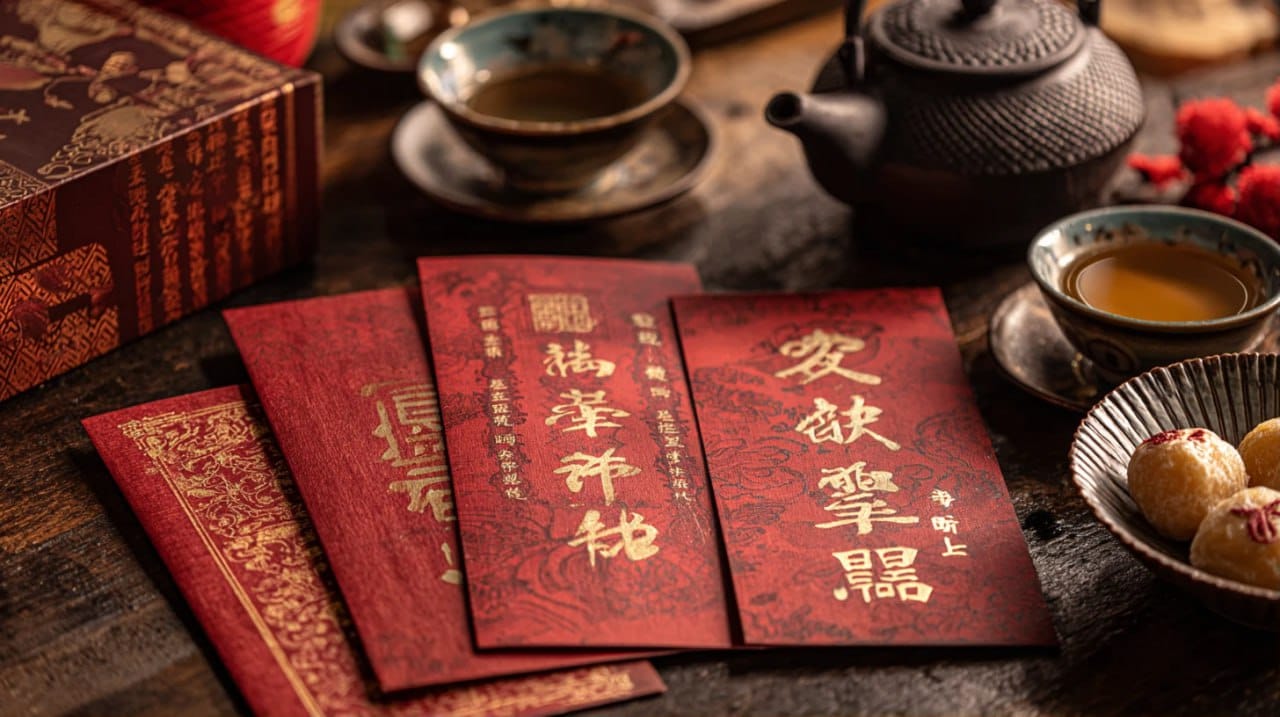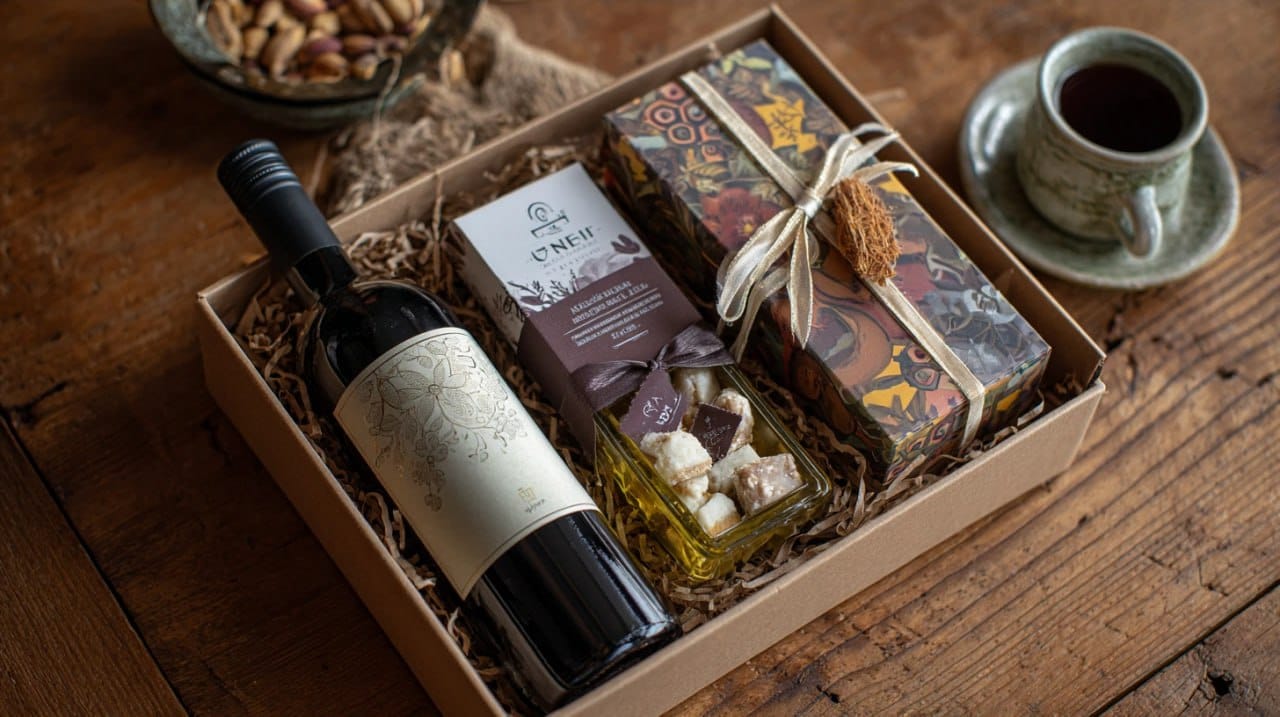Christmas Gift-Giving Traditions from Around the World
Gift-giving is a great way to show your sincere attitude and respect for the gift recipient. Knowing gift-giving traditions can strengthen connections and increase your self-esteem.

This article explores how different cultures around the world approach giving gifts at Christmas and their importance.
United States and Canada
In these countries, giving gifts is a common tradition on any holiday, especially on Christmas. People prefer useful and thoughtful gifts that show the interests of the recipient.
Gift etiquette is essential. It is worth wrapping gifts neatly, adding a greeting card with sincere wishes — it is a sign of care and attention. The person who chooses the gift should explore the gift recipient’s interests to please. It is common to open the gift at once and show your genuine emotions to the gift-giver, and express your gratitude.

In the USA and Canada, people like practical and meaningful gifts. They don't have to be expensive if they are exchanged with friends and colleagues. Common gifts include festive cups, winter accessories like warm socks and scarves, scented candles, chocolates, tasty snacks, and spa sets.
For family members, they can spend more money on electronics, household goods, gift certificates, toys, or jewelry.
Asia
In Asia, giving gifts is an important tradition, and each country has its special customs and meanings behind the gifts.
Japan may amaze people with its unique gift-giving traditions. Here are some examples.
- Presentation and Wrapping. Japanese people emphasize careful and neat packaging, which shows respect and thoughtful attention.
- Avoiding Unlucky Numbers. In Japan, people avoid the numbers 4 and 9, as they sound similar to words for "death" and "suffering." Lucky numbers include 7, promising good fortune, 8, symbolizing prosperity, and 3, bringing positivity.
- Gift Etiquette. It’s common to give gifts with both hands as a sign of respect, and recipients usually open gifts later rather than immediately in front of the giver.
For Christmas, gifts include food and drinks like sake, wine, and candies, as well as clothing, accessories, and electronics such as smartphones and video games. Gift certificates and cash — often given in decorative envelopes are also common choices, especially when the giver is unsure what to buy. Source
In China, gifts have meaning and symbolism attached to them. People often use red wrapping as it brings good luck, but avoid white colour as it is linked to funerals.

In India, gift-giving is an important part of many festivals, including Christmas, where friends and families exchange gifts to celebrate togetherness. During Christmas, popular gifts include sweets, chocolates, clothes, and toys, especially for children. People wrap gifts in colourful wrapping and gift-giving is accompanied by symbolic gestures, such as applying a tilak (a colored mark) on the recipient’s forehead to convey good wishes.
Europe
Gift-giving traditions in Europe differ from country to country, and are often linked to cultural and religious celebrations. Christmas is a major holiday for exchanging presents. People carefully choose gifts for loved ones and eagerly look forward to the exchange.
Various countries in Europe have different Christmas traditions.
- Germany. In Germany, children leave their shoes out on the night of December 5th, so St. Nicholas can fill them with gifts and sweets.
- Italy. On January 6th, Italian children receive gifts from La Befana, a kind old witch who visits homes on a broomstick. Adults exchange some meaningful gifts on the same day. Edible gifts in Italy for Christmas include panettone, pandoro, torrone (nougat), artisanal chocolates, and bottles of fine wine or limoncello.
- Spain. On January 6th, during the Epiphany, families exchange gifts that the Three Wise Men bring. They are special visitors from far away who came to see baby Jesus and gave him gifts of gold and two kinds of sweet-smelling tree sap called frankincense and myrrh.
- France. French children leave their shoes by the fireplace on Christmas Eve to be filled with gifts by Père Noël. Adults often exchange surprise gifts on Christmas Eve or Christmas Day.
- Netherlands. On December 5th, during Sinterklaasavond, both kids and adults receive gifts, often accompanied by humorous poems and playful riddles.
- Sweden. Jultomten, a Swedish Christmas gift bringer similar to Santa Claus, delivers gifts on Christmas Eve. Adults often participate in secret gift exchanges in the style of Santa.
- Poland. People gather to exchange gifts after the traditional Christmas Eve dinner.
- Greece. Both children and adults exchange presents on January 1st, St. Basil’s Day.
- Finland. On Christmas Eve, “Joulupukki” personally visits Finnish families, including adults, and gives them gifts.
- Austria. Austrians celebrate Christmas Eve by exchanging gifts for both children and adults, and the angelic figure Christkind traditionally brings the presents.
- Scandinavia. Families exchange gifts on Christmas Eve, have festive meals, and sing songs. The folklore figure, Julenissen (a Scandinavian Christmas elf), brings gifts and looks after homes during the holidays.

On the whole, in Europe, gift-giving is all about showing care, spending time with family, and enjoying the happiness of giving, often following old traditions and local stories.
Middle East and Africa
In the Middle East and Africa, Christmas gift-giving traditions depend on the country. It is common to celebrate Christmas among Christian minorities, who keep their festive gift-giving traditions with warmth and love.
In Ethiopia, people celebrate Christmas (Ganna) on January 7. It begins with fasting, followed by early morning church services, where people dress in traditional white clothes. The celebration includes candlelit processions, a lengthy mass, and the traditional game of ganna, similar to hockey.
Families also enjoy festive meals featuring wat, a spicy stew served with injera, a sourdough flatbread used to scoop up the food. Gift-giving is quite modest — families exchange handmade items, written notes with sincere greetings, and food. Source
In Lebanon, people eagerly prepare for Christmas. Children especially wait for gifts from Father Christmas (Papa Noël). Adults usually exchange thoughtful presents or sweets during the celebration.
In other regions, people choose simple gifts like clothes, delicious treats, and handmade crafts to express their love and appreciation for their loved ones. They cook delicious meals and enjoy the holiday in an atmosphere of joy and unity.
Russia
In Russia, gift-giving is an important tradition common among families, friends, and acquaintances. Although Christmas is not celebrated widely, the New Year remains the centerpiece. It's the main holiday when people gather and cook traditional dishes, and place gifts under the New Year tree.
Russians prepare well for the New Year and often buy expensive gifts for family members and small presents for others. Common gifts include gadgets, certificates, cosmetics, and home appliances. Inexpensive gifts include winter accessories and treats. It's a widespread tradition to exchange greetings and wishes for a Happy New Year. People exchange gifts before and after the holiday with loved ones.
Modern trends
Nowadays, gift-giving traditions have become a mix of customs and new trends. Globalisation and technology have influenced these traditions — people are now used to buying gifts online and sometimes buying digital gift cards, as this is an easier way for the recipient to choose what they really want. It is also common to give experiences as gifts, such as a spa treatment or massage, or to take someone out to dinner.
Sustainable Christmas has become more popular, so some people choose handmade and environmentally friendly presents. Gifts are still put under the Christmas tree on Christmas Eve and exchanged.
Both children and adults enjoy games. The Secret Santa gift exchange has become popular in offices, amongst friends, and within families. There is an element of surprise involved, so participants enjoy taking part in this tradition of giving gifts. Anyone can participate in this game, as inexpensive, handmade gifts are welcome and appreciated. It is a heart-warming and meaningful tradition that people around the world enjoy.
How to organize a Secret Santa gift exchange?
Each person is assigned to secretly purchase a gift for another participant. It is important to keep your identity secret until the final exchange of gifts. The easiest way to do this is to use a free online generator, which allows everyone to create wish lists to help their Secret Santa. For instance, the MySanta app allows participants to share their gift preferences, making the process smoother and more enjoyable.

Conclusion
Christmas gift-giving is a beloved tradition worldwide. Though not all countries celebrate the holiday on a large scale, many people take advantage of the season to make their loved ones happy with inexpensive but cute gifts. Nice words and heartfelt greetings are also essential.
FAQs
Why do some countries exchange gifts on different dates?
It depends on various religious and cultural traditions and countries' customs.
How not to offend someone with your gift?
Focus on choosing a thoughtful and meaningful present that you would also like to receive. Avoid gifts that remind people of their weaknesses and problems. For example, don't give a weight-loss program if you haven't been asked to.
When is it best not to give homemade items?
If the recipient indicates that practical, store-bought gifts are preferred. Also, if you are not good at crafts, it's advisable to stick to the ready-made items.



